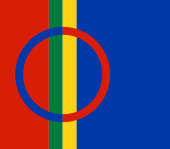 The EU seal product ban is affecting the indigenous Sami people who are native to the norhternmost Arctic parts of Sweden and Finland which both are in the EU, and also Norway which is not in the EU (where seal products are legal). In the Sami culture, its tradition to make clothing out of reindeer and seal skin. As you may know and as I have told you before, seals are hunted here in Sweden as well (and 2 other EU countries: Finland and Scotland), however since you must have certificates to really prove the sealskins you sell is not from Canada, it has hit the Sami communities hard since they do not have such certificates, so even if they would want to sell skins from Swedish hunted seals, the EU anti-Canadian seal products ban still affects them alot. The Sami people are Arctic nomads and reindeer herders who speaks their own language and lives their own culture, their communities does not have the same living standards as ordinary Europeans. The ban on Canadian seal products has hit the Sami people in Arctic Sweden very hard. EU is thus destroying Arctic Europeaan culture. Here is an article from 2012, that our friend Magnus has kindly translated from Swedish to English for us.
The EU seal product ban is affecting the indigenous Sami people who are native to the norhternmost Arctic parts of Sweden and Finland which both are in the EU, and also Norway which is not in the EU (where seal products are legal). In the Sami culture, its tradition to make clothing out of reindeer and seal skin. As you may know and as I have told you before, seals are hunted here in Sweden as well (and 2 other EU countries: Finland and Scotland), however since you must have certificates to really prove the sealskins you sell is not from Canada, it has hit the Sami communities hard since they do not have such certificates, so even if they would want to sell skins from Swedish hunted seals, the EU anti-Canadian seal products ban still affects them alot. The Sami people are Arctic nomads and reindeer herders who speaks their own language and lives their own culture, their communities does not have the same living standards as ordinary Europeans. The ban on Canadian seal products has hit the Sami people in Arctic Sweden very hard. EU is thus destroying Arctic Europeaan culture. Here is an article from 2012, that our friend Magnus has kindly translated from Swedish to English for us.
Seal product ban hits hard against Sami craftsmen
A vendor was reported to the police at the spring market in Arvidsjaur. The reason was because the vendor was selling clothes made of seal skin – and the EU has since 2009 banned all trade of seal products. Karin Vasara is a native Sami craftsman, she says that the seal product ban has affected her as a craftsman.
“It is clear that this kind of thing concerns me because sealskin was a big part of my production. But there are laws and regulations one has to follow”, she says.
After the ban was imposed the North American sealskin market has collapsed, which also affected Inuit communities hard. Although the ban does not apply to Inuit seal products they still suffer a reduction in demand.
Karin Vasara have stopped buying sealskins and stopped producing garments of sealskin. And she says that as a craftsman you must always have a backup plan and adapt.
– Today, a craftsman has to have a certificate from the county board of the Swedish county in which the hunting was done if one is to produce and sell goods of sealskin, it may not be in a larger scale. And if you import sealskin you have to have proof that the sealskin is from Inuit hunting of seals, says Vasara. Two different certificates Karin Vasara currently does not have and at first did not know existed.
Information about the Sami people
http://en.wikipedia.org/wiki/Sami_people
